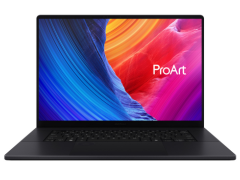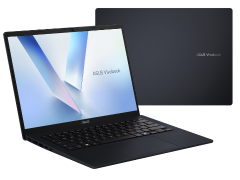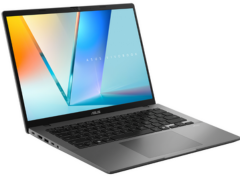- Home
- Laptops
- Laptop Finder
- Asus Laptops
- Asus VivoBook S15 S530UA-DB51-YL
Asus VivoBook S15 S530UA-DB51-YL
- Asus
- Last Updated: 24th December 2025
Key Specs
-
 Display size 15.60-inch
Display size 15.60-inch -
 Display resolution 1920x1080 pixels
Display resolution 1920x1080 pixels -
 Touchscreen No
Touchscreen No -
 Processor Core i5
Processor Core i5 -
 RAM 8GB
RAM 8GB -
 OS Windows 10 Home
OS Windows 10 Home -
 Hard disk No
Hard disk No -
 SSD 256GB
SSD 256GB -
 Graphics Nvidia GeForce MX150
Graphics Nvidia GeForce MX150
Market Status Released
Asus VivoBook S15 S530UA-DB51-YL Summary
Asus VivoBook S15 S530UA-DB51-YL is a Windows 10 Home laptop with a 15.60-inch display that has a resolution of 1920x1080 pixels. It is powered by a Core i5 processor and it comes with 8GB of RAM. The Asus VivoBook S15 S530UA-DB51-YL packs 256GB of SSD storage.
Graphics are powered by Nvidia GeForce MX150. Connectivity options include Bluetooth, Ethernet and it comes with 4 USB ports (2 x USB 2.0, 1 x USB 3.0), Multi Card Slot, Mic In ports.
As of 24th December 2025, Asus VivoBook S15 S530UA-DB51-YL price in India starts at Rs. 111,921.
Asus VivoBook S15 S530UA-DB51-YL Price in India
| Product Name | Price in India |
|---|---|
| Asus Vivobook S15 S530UA-DB51-YL Laptop (Windows 10 Home, 8GB RAM, 256GB HDD, Intel Core i5, Silver & Yellow, 15.6 inch) | ₹ 111,921 |
Asus VivoBook S15 S530UA-DB51-YL price in India starts from ₹ 111,921. The lowest price of Asus VivoBook S15 S530UA-DB51-YL is ₹ 111,921 at Amazon on 24th December 2025.
Price too high? Subscribe to our price drop alert
Notify When Available
Recommended Alternative
Asus VivoBook S15 S530UA-DB51-YL Full Specifications
General
| Brand | Asus |
| Model | VivoBook S15 S530UA-DB51-YL |
| Price in India | ₹111,921 |
| Model Number | S15 S530UA-DB51-YL |
| Series | VivoBook |
| Colours | Silver, Yellow |
| Operating system | Windows 10 Home |
| Battery Life (up to hours) | 8 |
Display
| Size | 15.60-inch |
| Resolution | 1920x1080 pixels |
| Touch Screen | No |
Processor
| Processor | Intel Core i5 8250U |
| Base Clock Speed | 1.6 GHz |
| Cache | 6MB |
Memory
| RAM | 8GB |
| RAM Slots | 2 |
| Expandable RAM up to (GB) | 24GB |
Graphics
| Graphics Processor | Nvidia GeForce MX150 |
| Dedicated Graphic Memory Type | GDDR5 |
Storage
| Hard disk | No |
| SSD | 256GB |
Connectivity
| Bluetooth version | 4 |
| Ethernet | 10/100/1000 Base T |
Inputs
| Pointer Device | Touchpad |
| Touchpad | Yes |
| Internal Mic | Yes |
| Speakers | Yes |
| Finger Print Sensor | No |
Ports and slots
| Number of USB Ports | 4 |
| USB Ports | 2 x USB 2.0, 1 x USB 3.0 |
| Multi Card Slot | SDXC Card Reader |
| Mic In | Yes |
! Error or missing information?
Please let us know
Asus VivoBook S15 S530UA-DB51-YL Competitors
OR
-
 Asus VivoBook S15 S530UA-DB51-YL
₹111,921
Asus VivoBook S15 S530UA-DB51-YL
₹111,921
Asus VivoBook S15 S530UA-DB51-YL User Review and Ratings
0★
Other Asus Laptops
Related Laptops
Need some help?
Asus service center near you
Laptop Brands
Popular on Gadgets
- Samsung Galaxy Unpacked 2025
- ChatGPT
- Redmi Note 14 Pro+
- iPhone 16
- Apple Vision Pro
- Oneplus 12
- OnePlus Nord CE 3 Lite 5G
- iPhone 13
- Xiaomi 14 Pro
- Oppo Find N3
- Tecno Spark Go (2023)
- Realme V30
- Best Phones Under 25000
- Samsung Galaxy S24 Series
- Cryptocurrency
- iQoo 12
- Samsung Galaxy S24 Ultra
- Giottus
- Samsung Galaxy Z Flip 5
- Apple 'Scary Fast'
- Housefull 5
- GoPro Hero 12 Black Review
- Invincible Season 2
- JioGlass
- HD Ready TV
- Laptop Under 50000
- Smartwatch Under 10000
- Latest Mobile Phones
- Compare Phones
Latest Gadgets
- Huawei Nova 15
- Huawei Nova 15 Pro
- Huawei Nova 15 Ultra
- OnePlus 15R
- Realme Narzo 90x 5G
- Realme Narzo 90 5G
- Vivo S50 Pro Mini
- Vivo S50
- Asus ProArt P16
- MacBook Pro 14-inch (M5, 2025)
- Huawei MatePad 11.5 (2026)
- OnePlus Pad Go 2 (5G)
- OnePlus Watch Lite
- Just Corseca Skywatch Pro
- Acerpure Nitro Z Series 100-inch QLED TV
- Samsung 43 Inch LED Ultra HD (4K) Smart TV (UA43UE81AFULXL)
- Asus ROG Ally
- Nintendo Switch Lite
- Haier 1.6 Ton 5 Star Inverter Split AC (HSU19G-MZAID5BN-INV)
- Haier 1.6 Ton 5 Star Inverter Split AC (HSU19G-MZAIM5BN-INV)
© Copyright Red Pixels Ventures Limited 2025. All rights reserved.












































